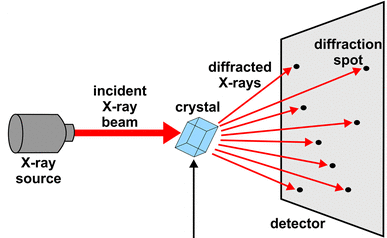Understand X-Ray Diffraction (XRD) In Nanotechnology
Definition: X-Ray Diffraction (XRD) is a powerful analytical technique used to characterize the atomic and molecular structure of a crystal. By measuring the angles and intensities of diffracted beams of X-rays interacting with a material, XRD provides detailed information about the crystallography, chemical composition, and physical properties of the material. This article delves into the definition, principle of operation, key features, and applications of XRD, mirroring the style and formatting of the provided excerpts.

Definition and Principles of Operation
XRD is based on the constructive interference of monochromatic X-rays and a crystalline sample. This interaction produces a diffraction pattern that is characteristic of the sample's structure. The principle of operation for XRD involves the Bragg's Law, which relates the wavelength of the X-rays, the diffraction angle, and the distance between the crystal planes.
- Bragg's Law: Bragg's Law is the foundational principle behind XRD analysis. It is mathematically expressed as nλ = 2dsinθ, where n is an integer representing the order of the diffracted beam, λ is the wavelength of the incident X-ray beam, d is the distance between the crystal planes, and θ is the angle of incidence at which the X-ray beam strikes the crystal planes. This equation allows for the calculation of the crystal structure by analyzing the diffracted beams.
- Diffraction Patterns: Diffraction patterns obtained from XRD analysis are unique to each material and provide a "fingerprint" that can be used to identify and characterize the material's structure. The intensity and position of the peaks in the diffraction pattern give insights into the crystallography, phase identification, and other structural properties of the material.
- Crystallography Insights: Delving deeper into the realm of crystallography, XRD offers profound insights into the arrangement of atoms within a crystal lattice. The diffraction patterns not only reveal the spatial arrangement of atoms but also provide information on bond lengths, angles, and symmetry within the crystal structure. This level of detail is crucial for understanding the material's properties and behavior at the atomic level.
Key Features of XRD
XRD is renowned for its precision and reliability in determining the structural properties of crystalline materials. Below are some of the key features that make XRD an indispensable tool in material science and research.
- Phase Identification: XRD is capable of identifying the crystalline phase or phases present in a sample, which is crucial for understanding the material's properties and behavior.
- Crystallite Size Estimation: XRD can estimate the size of crystallites in a material, providing valuable information about the material's mechanical properties and stability.
- Strain Measurement: The technique can measure the strain in crystalline materials, which is important for evaluating the material's performance under stress.
- Texture Analysis: XRD can analyze the preferred orientation of crystals in polycrystalline materials, known as texture, which affects the material's properties.
- Quantitative Analysis: One of the key advantages of XRD is its ability to perform quantitative analysis of crystalline materials. By correlating the intensity of diffracted X-rays with the concentration of specific elements or phases in the sample, XRD can provide quantitative data on the composition of materials. This quantitative analysis is essential for quality control, material characterization, and research in various industries.
Applications of XRD
XRD has a wide range of applications across various fields due to its ability to provide detailed information about the structure and composition of materials. Here are some of the key applications:
- Material Science: In material science, XRD is used for phase identification, crystal structure determination, and analysis of material properties. It aids in the development of new materials and the improvement of existing ones.
- Pharmaceuticals: XRD plays a critical role in the pharmaceutical industry by determining the crystalline forms of drugs, which can affect the drug's solubility, stability, and bioavailability.
- Geology and Mining: In geology and mining, XRD is used for mineral identification and analysis. It helps in the exploration of mineral resources and the assessment of ore quality.
- Environmental Science: XRD is utilized in environmental science to identify and quantify pollutants in soil and water, contributing to environmental monitoring and remediation efforts.
- Art and Cultural Heritage: Beyond its scientific applications, XRD is also employed in the preservation and analysis of art and cultural heritage artifacts. By non-destructively analyzing the composition and structure of historical objects, XRD helps in conservation efforts, authentication of artworks, and understanding the materials used in cultural artifacts.
Conclusion
X-Ray Diffraction (XRD) is a versatile and powerful technique that provides invaluable insights into the structural properties of crystalline materials. Its wide range of applications highlights its importance in advancing research and development in various scientific and industrial fields. By offering atomic-scale precision, XRD continues to be a cornerstone technique in the characterization of materials.
Further Reading
Philosophical Transactions of the Royal Society A, "Recent developments in X-ray diffraction/scattering computed tomography for materials science"
